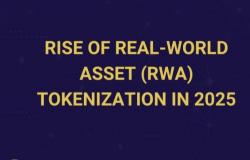
Decentralized exchanges (DEXs) have emerged as a cornerstone of decentralized finance, enabling permissionless cryptocurrency trading without intermediaries or custodial control. Understanding how DEXs function, particularly automated market maker (AMM) protocols, is essential for anyone participating in DeFi or seeking to comprehend how blockchain technology is transforming financial markets.
Traditional centralized exchanges require users to deposit funds into exchange-controlled wallets, introducing counterparty risk and potential regulatory compliance burdens. DEXs eliminate these concerns by enabling peer-to-contract trading where users maintain custody of their assets until the moment of exchange. Smart contracts facilitate trades directly from user wallets, ensuring users retain control throughout the trading process.
Automated Market Makers represent the breakthrough innovation that made DEXs practical. Rather than using order books matching buyers and sellers, AMMs use liquidity pools where users deposit token pairs that others can trade against. Mathematical formulas, most commonly the constant product formula (x * y = k), determine exchange rates based on the ratio of tokens in the pool. This approach ensures liquidity is always available, though prices adjust based on trade size.

Uniswap pioneered the AMM model and remains the largest DEX by volume. Its simple x * y = k formula made it accessible for developers to implement and users to understand. When traders swap tokens, they pay a fee (typically 0.3%) that is distributed to liquidity providers, creating economic incentives for users to supply liquidity. This model proved so successful that dozens of DEXs have adopted similar approaches.
Curve Finance optimized the AMM model for stablecoins and similar-priced assets. Its modified formula minimizes slippage for trades between assets that should maintain similar values, making it ideal for stablecoin swaps and wrapped asset trading. Curve's design demonstrates how AMM algorithms can be tailored for specific asset types, improving capital efficiency compared to general-purpose DEXs.
Liquidity providers face a unique risk called impermanent loss, which occurs when token prices diverge from their initial ratio. When users deposit tokens into liquidity pools, they're exposed to price movements in both assets. If one token appreciates significantly relative to the other, the liquidity provider would have been better off simply holding the tokens. This 'loss' is impermanent because it only crystallizes when liquidity is withdrawn; if prices return to the original ratio, the loss disappears.
Despite impermanent loss, liquidity provision can be profitable due to trading fees. High-volume pools generate substantial fee income that can offset impermanent loss. Protocols have introduced additional incentives including governance token rewards, making liquidity provision attractive even for volatile asset pairs. Understanding the trade-offs between fee income and impermanent loss is crucial for effective liquidity management.
Advanced DEXs have introduced concentrated liquidity, pioneered by Uniswap V3. Rather than providing liquidity across all possible price ranges, liquidity providers can concentrate their capital within specific price ranges where they expect trading to occur. This approach increases capital efficiency, allowing smaller amounts of liquidity to support larger trading volumes within the specified range.
The user experience of DEXs has improved dramatically since their inception. Modern interfaces rival centralized exchanges in usability while maintaining decentralization benefits. Aggregators like 1inch and Matcha route trades across multiple DEXs to find optimal prices, making the complexity of choosing exchanges invisible to end users. These developments have helped DEXs achieve billions in daily trading volume.
Security considerations remain paramount when using DEXs. Users must guard their private keys and exercise caution with smart contract approvals. While DEXs eliminate custodial risk, they introduce smart contract risk—bugs or vulnerabilities in the protocol code could lead to loss of funds. Established DEXs with extensive auditing and proven track records generally present lower risk than newer, untested protocols.
Regulatory challenges facing DEXs continue to evolve. Some jurisdictions treat DEXs similarly to centralized exchanges, potentially requiring KYC compliance or licensing. The question of who is responsible for regulatory compliance in truly decentralized protocols remains unresolved. These uncertainties create challenges for DEX developers and users in certain jurisdictions.
Looking forward, DEXs are positioned to capture increasing market share as DeFi adoption grows. Cross-chain DEXs enabling trades across different blockchains, improved capital efficiency, and gasless transactions through layer-2 solutions will further enhance their competitiveness against centralized alternatives. As the technology matures, DEXs represent the future of permissionless, trustless cryptocurrency trading.





